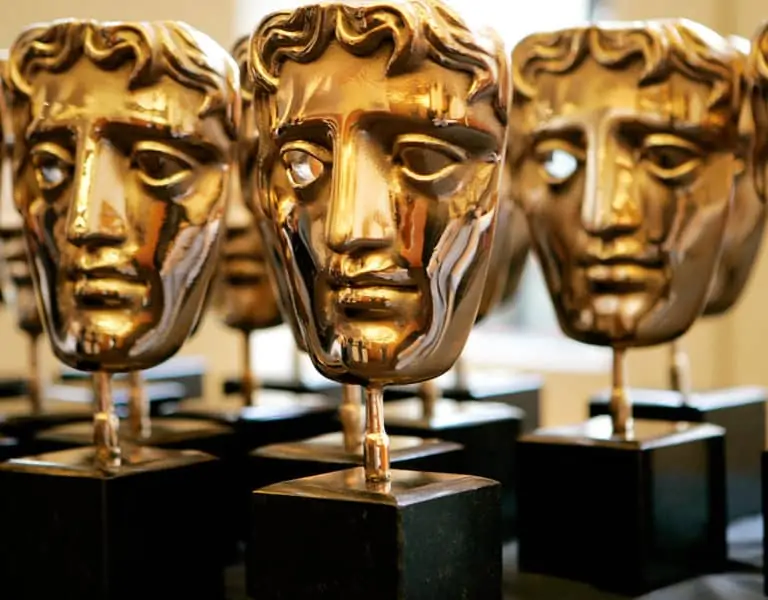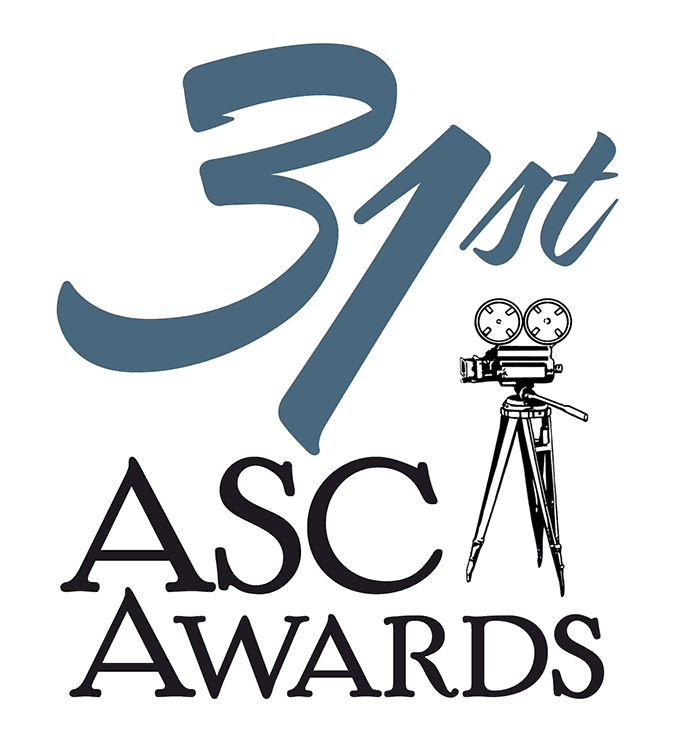Close Encounter
Bradford Young ASC / Arrival
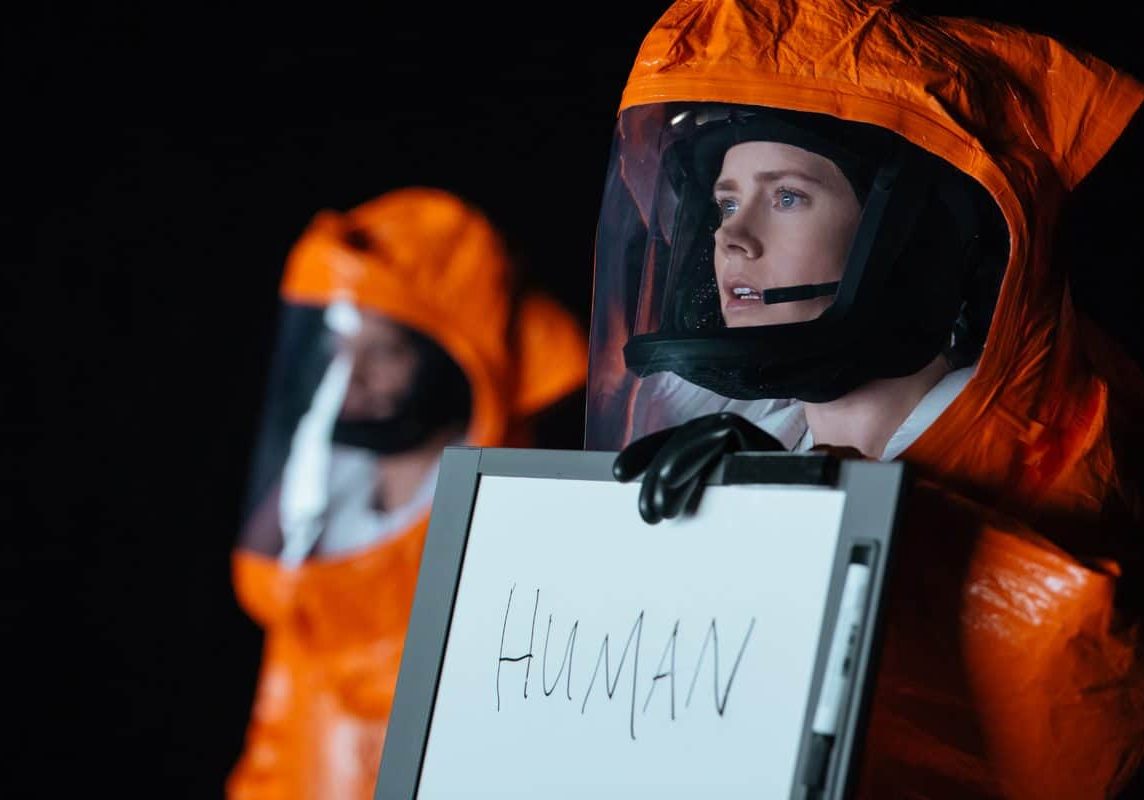
Close Encounter
Bradford Young ASC / Arrival
BY: Trevor Hogg
For the cinematographer known for Ain’t Them Bodies Saints and Selma where the personal journeys of the characters define the storytelling, the science fiction genre which tends to be laden with visual effects seemed to be an unlikely fit but Bradford Young ASC was drawn towards a cinematic adaptation about a linguist trying to figure out if an alien presence is hostile while dealing with the loss of her daughter.
“I’m a big fan of Denis Villeneuve’s work and the script,” states Bradford Young when discussing what attracted him to the project directed by the Canadian filmmaker responsible for Incendies and Sicario. “The big hurdle is being shackled to a genre that has so many tropes. It was about freeing up a little bit and just being honest with the material which wasn’t necessarily about aliens per se but somebody questioning their own mortality. Once we locked into that it became what people call ‘dirty sci-fi’. An ordinary day and aliens just happened to showup.”
The audience is able to emotionally connect with the protagonist. “The key was coming to the realization that Louise Banks is a person we know. I know this intellectual melancholy way of dealing with loss. As a parent once you get anchored to that story all the other ideas about sci-fi having a specific scale could be thrown out the window. The whole reason why I felt I could be part of that process was because there was this more intimate drama that had this science fiction element tied to it.”
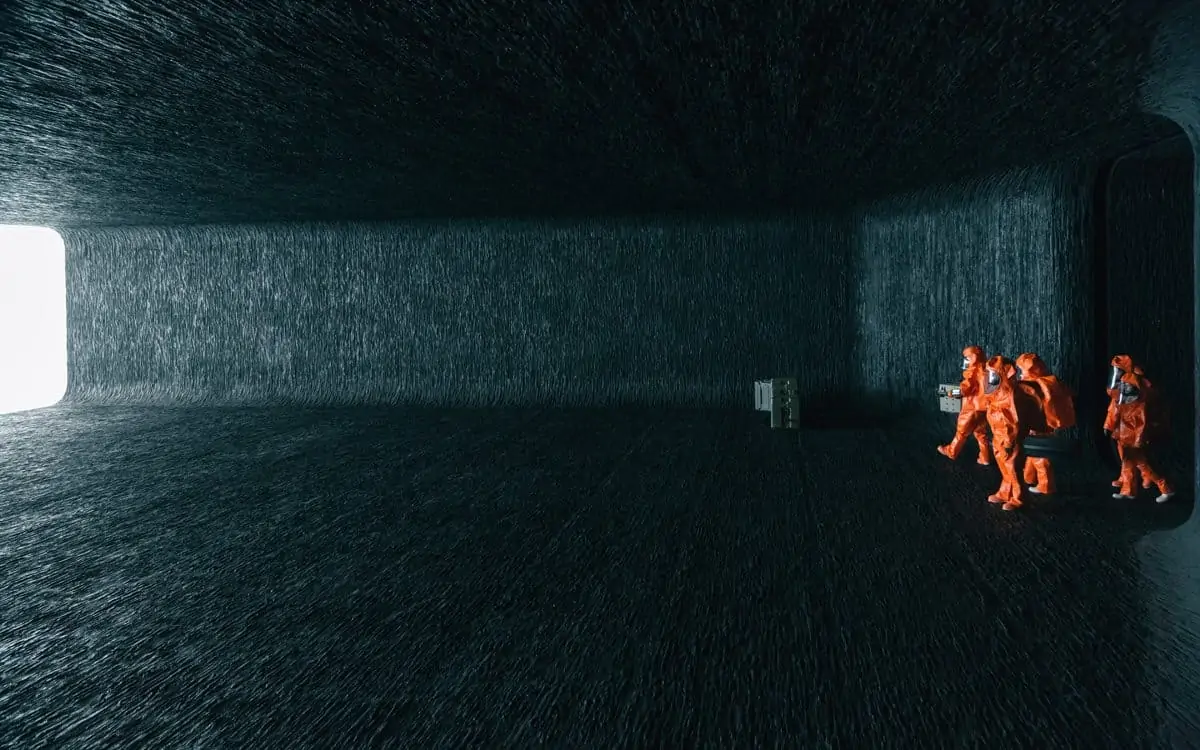
The creation of the storyboards was collaborative. “Denis and Sam Hudecki storyboarded every day and I would slide in when I could,” remarks Bradford Young who had eight weeks of preproduction time. “Louis Morin [Visual Effects Supervisor] and I had a relationship. We wanted to make a film that didn’t highlight the visual effects but lived up to Louise’s story. What we did was to make all the techvis and previs pieces match that. I remember seeing the previs for the Memory Chamber Sequence and looking at the previs was as emotional as seeing it on the screen. Making sure that all of those things worked in previs was key in ensuring that the scenes worked when we photographed it and when Joe Walker [Editor] got his hands on the material.”
There was room to improvise with the shot list. “The storyboards anchored us but we broke from them quite a bit and let our feelings drive the process.”
Scandinavian photographer Martina Ivanov influenced the look of Arrival. “There’s a book she did called Speedway which is about motocross racers that ride at night on these snow packed racetracks,” explains Bradford Young. “There are quite a few shots, including the portraits she does of the racers that spoke to me. It was about taking something that is ordinary recreation and turning it into something other worldly. That’s why I enjoy her work. She inspired not only the look of Arrival but the mentality as I tried to help make the film.”
56 days of principal photography commenced on June 7, 2015 and took place mainly in Montreal with St. Fabien-sur-Mer doubling for Montana. “It took us time to find the Montana landing site because it had to have all of the right elements. It didn’t want to be too mountainous because you didn’t want to lose the scope of the ship. It didn’t want to be too barren because that felt too cliché. It took a couple of trips and a few rides in helicopters to find that location. Other than that it was a contained interior film so a lot of what you see in the film was built on stages other than Louise’s house. Patrice Vermette [Production Designer] and I wanted to communicate in form something that mirrored what you would see inside of the ship. You see that in her office and classroom at the university. Montreal is a textured city and Quebec is a beautiful province. We knew it was all there.”
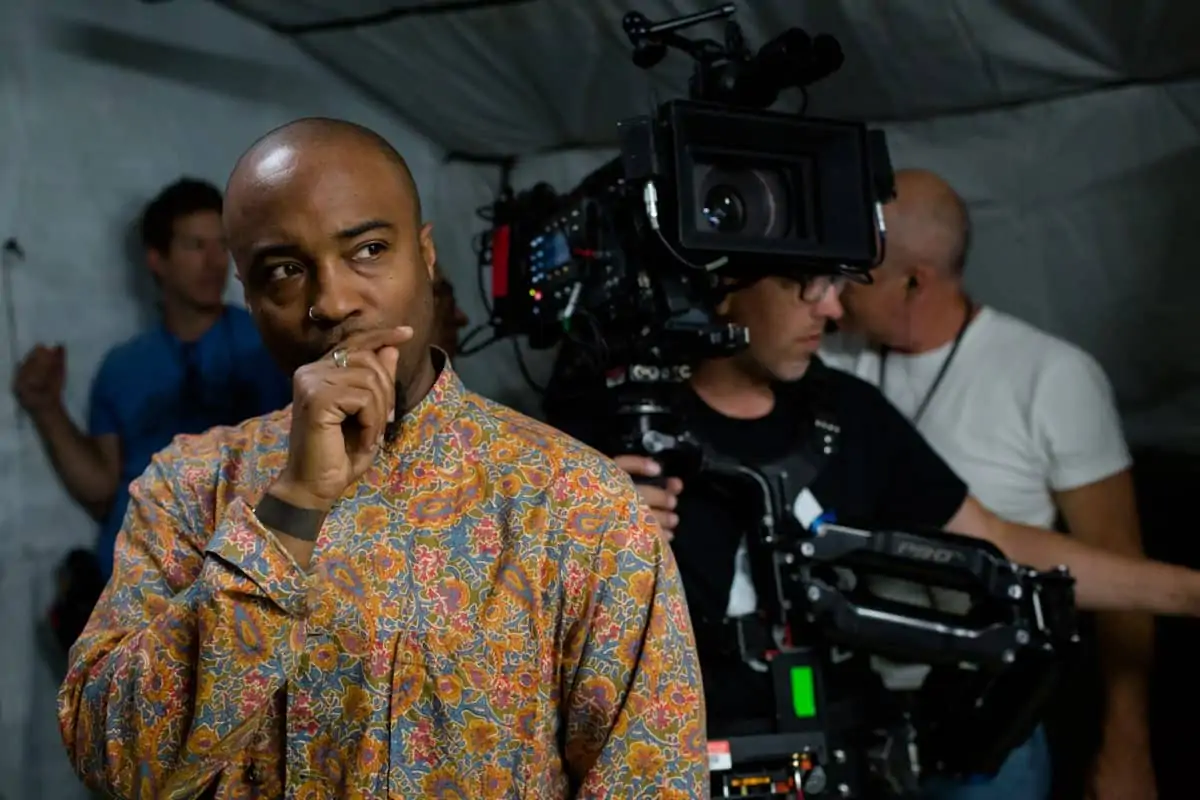
"For me it’s about being imperfect. I’m not attracted to precision orientated cinematography. I’m more interested in photography that has feeling. I have no fears in using three or four sets of lenses as long as it works for the film."
- Bradford Young ASC
A 150 foot tunnel with an interview room was constructed for the interior of the alien spacecraft. “Patrice is no nonsense,” observes Bradford Young. “We decided to have a ceiling with four real walls on that set so to have a real tunnel to shoot in. Once you do that a certain amount of tension and restrictions are created which required me to be more inventive. However, at same level the tunnel was such a massive set piece that it wasn’t hard to lens and to find a lot of gravitas in those images and angles. First and foremost, it was making sure that we were true to form in terms to how Patrice designed the set. That was an uphill thing. On the other hand it was about creating a third level of singularity so allowing the light source inside of the ship to be precise but also at the same time not overthink it. Instead of making the ship about alloys or places where aliens would put light all that we were responsible for was making sure that we created an opening where Louise could talk to the aliens. In that sense it was great because the soft lighting is what I like to do. It made for a more meditative almost binary space where we have spectacular scale with these deep rich black walls and a beautiful soft light source that the actors could interact with. It was a dream come true.”
Arrival is a single rather than multiple camera production. “We used Alexa XTs shot open gate,” states Bradford Young. “I had two sets of vintage Ultra Primes from CamTech in L.A.. Mels in Montreal supplied a set of Super Speed. We also shot with an Alexa M which is used for a lot of the Flashbacks/Flashforwards Sequences. We used some ARRIMAXs but more than anything this film is driven by available light. When we did light I used tons of LEDs so the screen of the ship is backlit with LEDs, the military tents all those lights you see in frame are actual lights we used to light the set, and those military grade lights are retrofitted with ASTech LED tubes which gave us a lot of controllability. I was able to create choices on the fly with an iPad. Every light in the set was driven by its own dimmer so I could dim them up or down as well change the colour temperature and intensity.”
There was a ‘quilting of the lenses’ even within scenes with 90 per cent movie being shot with Ultra Prime 28mm and Super Speed 35mm. “For me it’s about being imperfect. I’m not attracted to precision orientated cinematography. I’m more interested in photography that has feeling. I have no fears in using three or four sets of lenses as long as it works for the film.”
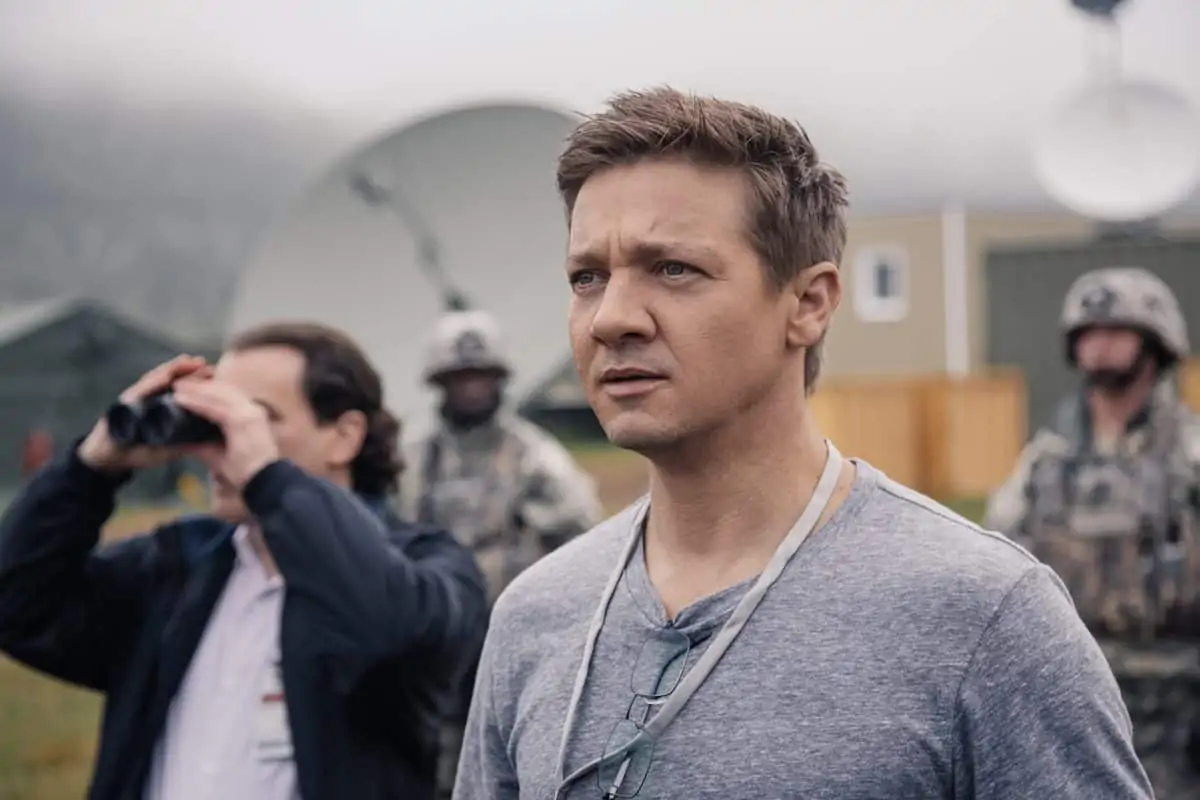
Flashbacks and Flashforwards Scenes have the atmosphere of a home movie. “It was about camera behaviour. It was about making sure that the camera was loose and less controlled; that’s what gives it that feel. I was able to do that with the Alexa M. It’s a lot lighter so I was able to keep it really close and intimate because I have the camera on my shoulder.”
The whole film was captured as ARRIRAW with a 2:35:1 aspect ration being cropped from the open gate photography. As for the lighting the spaceship is brighter while the outside world is more foreboding. “It was about creating a visual arc so when Louise gets into the ship I wanted it to feel like a temple and for her to have a certain level of release that is not foreshadowed in her everyday life which seems more melancholy.”
A prominent colour element is the orange hazmat suits. “I’m sure that everybody from Patrice to Louis would tell you that was a real challenge. We made some specific choices to bring the intensity level of that orange down but we didn’t want to undermine what was a beautiful opportunity to highlight the difference between something earthly and chromatic against something unearthly and monochromatic, like the spaceships.”
“Joe Gawler coloured the film,” remarks Bradford Young. “I’ve had a long time relationship with him. There weren’t so many changes in the DI. In the DI we put a lot more time trying to make sure that the visual effects shots for the rest of the film had a particular ethos to it. In general, it as about controlling the nuances like making hazmat suits not overly orange or when you are in the spaceship that you don’t lose all of those textures on the walls or when you’re inside the tent it didn’t seem overly dark but dark enough that when Louise walked outside you felt that gradual brightness when she goes from the tent to the truck that leads us to the spaceship into the spaceship.”
This was the first time that the native of Louisville, Kentucky dealt with visual effects shots. “Louis liked feedback. They weren’t just designing shots and presenting ideas saying, ‘This is what it is.’ There was a lot of conversation about what is this film, why are we choosing these lenses, and the visual effects shots had to mirror that. Once we had figured out the rhythm and flow everybody was on the same page.”
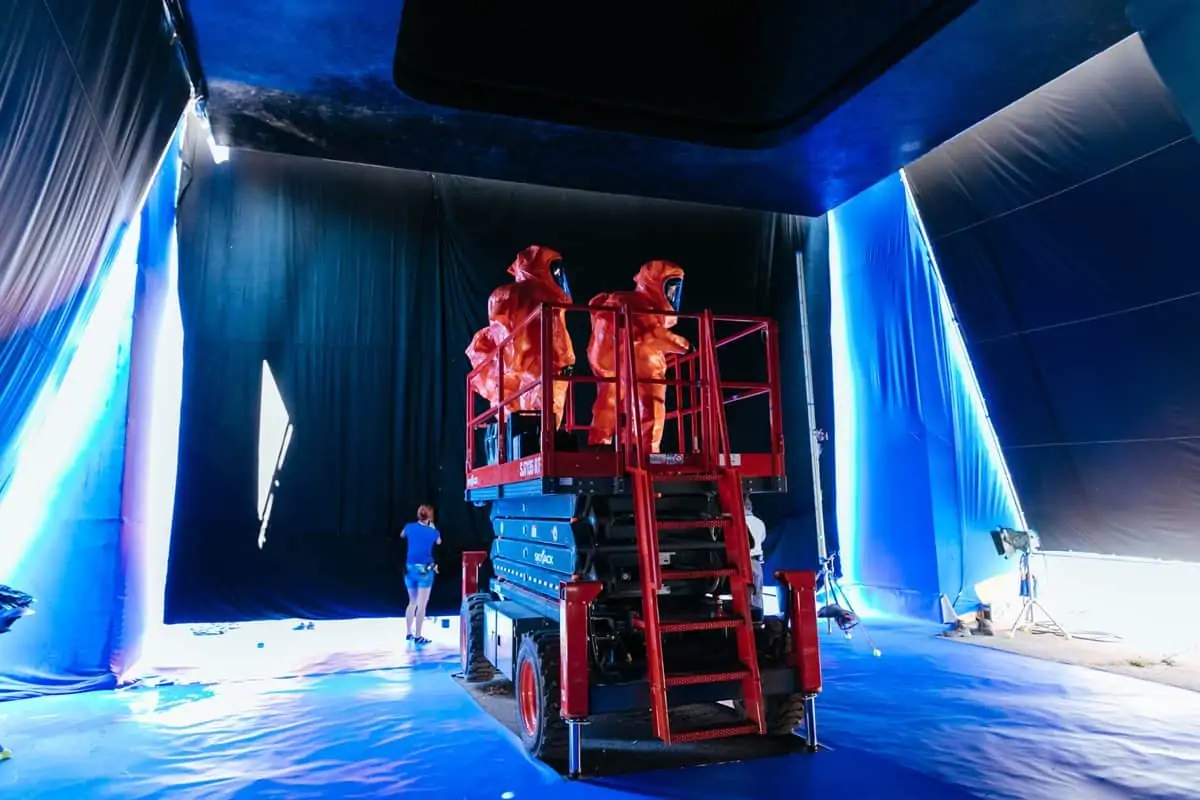
“I’m acutely aware of all of the people involved with the process and one of the persons I’m always curious to see how they organize the story is the editor,” observes Bradford Young who was pleased with how the opening sequence between Louise and her daughter Hannah turned out. “I’m a big fan of Joe Walker as an editor so it was a wonderful opportunity to give him the kind of material that he knows how to wrap his mind around. He’s a sensitive editor. I was proud to see those loose and down-to-earth shots that we gave him transformed into an emotionally grounded story.” Young adds, “Being a parent and making this film wasn’t easy. My work is the reflection of my life so I had to wrestle and address things that I would hope to not address in my real life. But I had to open myself up to what that might feel like so I could bring truthfulness and honesty to the film.” The world of visual effects is not being left behind as the American cinematographer is slated to shoot the standalone Han Solo movie. “It’s a different beast with a lot more visual effects but it’s interesting how much the visual effects don’t drive the film. I’m trying to choose projects where the visual effects help enhance the story. I’m better at photographing regular old flesh and bones. Han Solo is the same as Arrival where the story drives everything.”









